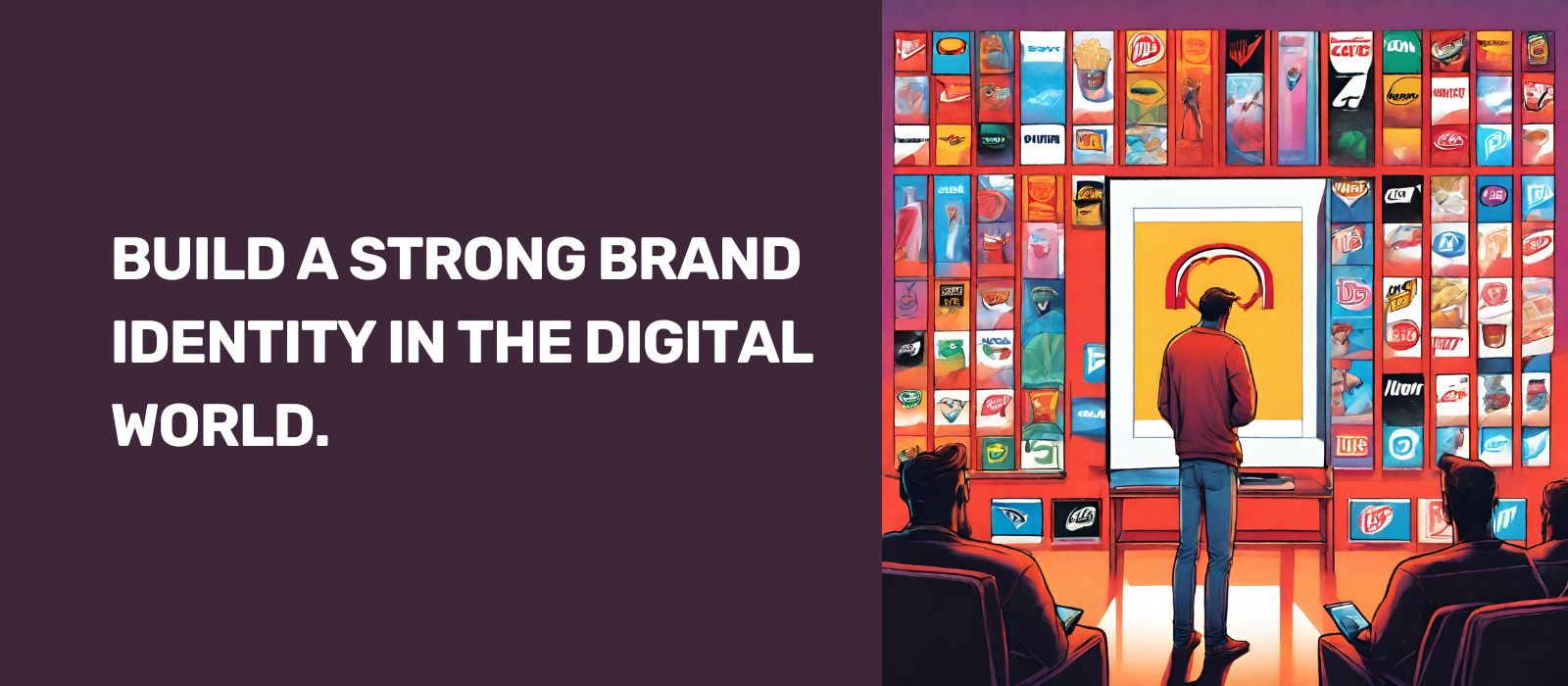
Author: Dilna Parvin
September 28, 2023
Branding has become more crucial than ever for businesses. A well-crafted and cohesive brand image can set a business apart from its competitors, foster a strong emotional connection with customers, and ultimately drive long-term success. In this era of rapid technological advancements and a multitude of platforms, crafting a cohesive brand image is both an art and a science. Here,we will explore the importance of branding in the digital age and how to create a cohesive brand image that resonates with your target audience.
Understanding Branding in the Digital Age
Branding is more than just a logo, color scheme, or a catchy tagline. It encompasses the overall perception that people have about your business, products, or services. In the digital age, this perception is shaped by various factors:
1.Online Presence
A significant portion of branding now occurs online. Your website, social media profiles, online advertisements, and digital content contribute to how people perceive your brand.
2.User Experience (UX)
The way users interact with your website, app, or any digital platform plays a crucial role in shaping your brand image. A seamless and enjoyable user experience can significantly impact brand perception.
3.Content Strategy
The content you produce, share, and engage with online is a key
of branding. It not only informs but also shapes opinions about your brand's values, expertise, and personality.
4. Customer Reviews and Feedback
In the digital age, customer reviews and feedback have a significant impact on your brand image. Positive reviews can boost credibility, while negative ones can harm your reputation.
5. Consistency Across Platforms
Ensuring a consistent brand identity and message across all digital platforms is essential for building trust and recognition among your audience.
Key Elements of Crafting a Cohesive Brand Image
To create a cohesive brand image in the digital age, businesses need to pay attention to various elements that define their brand identity and how it's portrayed to the world.
1. Define Your Brand Identity
Your brand identity includes your brand's mission, vision, values, personality, and positioning. It's crucial to clearly define these aspects to ensure consistency in all your branding efforts.
Mission and Vision: Define the purpose and aspirations of your brand. What do you aim to achieve, and what do you stand for?
Values and Principles: Identify the core values that guide your brand's behavior and decisions. Are you focused on innovation, customer-centricity, sustainability, or something else?
Brand Personality: Determine the traits that characterize your brand. Is your brand friendly, professional, innovative, or traditional?
Brand Positioning: Establish where your brand stands in relation to your competitors. What unique value do you bring to your audience?
2. Design a Memorable Visual Identity
Visual elements are powerful tools in conveying your brand's message and creating a lasting impression. These include your logo, color palette, typography, and other design elements.
Logo: Design a logo that is visually appealing, memorable, and aligns with your brand's values and mission.
Color Palette: Choose a color scheme that reflects your brand's personality and resonates with your target audience.
Typography: Select fonts that are easily readable and match the tone of your brand.
Imagery: Use consistent imagery that aligns with your brand's message and resonates with your audience.
3. Craft a Compelling Brand Story
A compelling brand story helps humanize your brand and connects with your audience on an emotional level. Tell the story of how your brand came into being, its journey, struggles, and successes.
Authenticity: Be genuine and authentic in telling your brand's story. People connect with authenticity.
Relatability: Make sure your story is relatable and resonates with your target audience's experiences and aspirations.
Engagement: Encourage engagement by inviting your audience to be part of your brand story, share their experiences, and interact with your brand.
4. Leverage Digital Platforms Effectively
In the digital age, a significant part of branding happens online. Utilize various digital platforms to reach your audience, engage with them, and convey your brand's message.
Website: Ensure your website is user-friendly, informative, and visually appealing, reflecting your brand's identity and values.
Social Media: Engage with your audience on social media platforms. Share valuable content, interact with your followers, and maintain a consistent brand voice.
Content Marketing: Develop a robust content marketing strategy to share valuable content that aligns with your brand's message and engages your audience.
Email Marketing: Utilize email marketing to keep your audience informed about your brand, products, and promotions.
Branding in the digital age is a dynamic and evolving process. It requires careful thought, strategic planning, and consistent execution to create a cohesive brand image that resonates with your audience. By defining your brand identity, designing a memorable visual identity, crafting a compelling brand story, maintaining consistency in messaging and tone, and leveraging digital platforms effectively, you can nurture a strong and lasting brand presence in the digital landscape.
By understanding your brand values, knowing your audience, and aligning every aspect of your digital presence, you can create a brand image that leaves a lasting impression and fosters brand loyalty. If you're looking to enhance your brand's digital presence and create a cohesive brand image, Contact us today to elevate your brand in the digital world.







